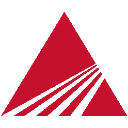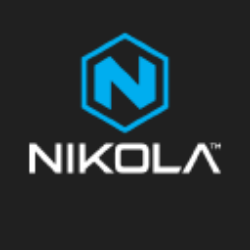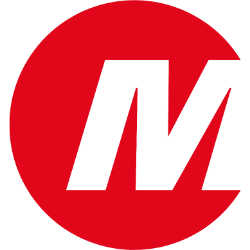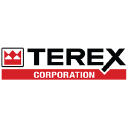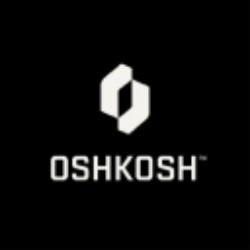DE

Deere & Company
DE
(2.8)423,62 USD
8% ROA
31.33% ROE
13.36x PER
109.516.608.000,00 USD
286.68% DER
1.47% Yield
13.9% NPM
Deere & Company Stock Analysis
Deere & Company Fundamental Analysis
Fundamental analysis in stock investing is like studying the foundation of a house before buying it. It involves looking at a company's financial health, like its earnings, assets, and debts, to determine if it's a good investment based on its fundamental strength and potential for growth.
| # | Analysis | Rating |
|---|---|---|
| 1 |
ROE
The stock's ROE exceeds expectations (46.16%), revealing strong profitability and efficient use of shareholders' equity, making it an attractive investment opportunity. |
|
| 2 |
ROA
This stock has a great ability to make a lot of money from the things it owns, which makes it a really good investment for smart investors. |
|
| 3 |
Assets Growth
Over the past five years, this company's revenue has consistently increased, demonstrating a robust financial performance that makes it an appealing opportunity. |
|
| 4 |
Dividend
The company's consistent dividend payouts over the past five years exemplify its strong commitment to providing shareholders with reliable returns, making it an attractive investment option. |
|
| 5 |
Revenue Growth
With a track record of continuous revenue growth in the last three years, this company offers a promising investment opportunity |
|
| 6 |
Net Profit Growth
This company's net profit has been consistently on the rise over the past three years, indicating a strong financial performance and making it an appealing investment opportunity. |
|
| 7 |
Buffet Intrinsic Value
The company's stock seems undervalued (3.511) by Warren Buffett's formula, indicating a promising investment opportunity as its intrinsic value exceeds the market price. |
|
| 8 |
PBV
The stock's elevated P/BV ratio (4.85x) raises concerns about its overvaluation, making it an imprudent choice for investors seeking value. |
|
| 9 |
DER
The company has a high debt to equity ratio (268%), which means it owes a lot of money compared to what it actually owns, making it financially risky. |
|
| 10 |
Graham Number
The company's Graham number suggests that its stock price is overestimated, implying that it may not be a promising investment opportunity. |
|
| 11 |
Dividend Growth
The company's dividend growth has shown no improvement in the past three years, making it a less attractive investment option for those seeking increasing returns. |
Deere & Company Technical Analysis
Technical analysis in stock investing is like reading the patterns on a weather map to predict future weather conditions. It involves studying past stock price movements and trading volumes to make predictions about where a stock's price might go next, without necessarily looking at the company's financial health.
| # | Analysis | Recommendation |
|---|---|---|
| 1 | Awesome Oscillator | Buy |
| 2 | MACD | Buy |
| 3 | RSI | Hold |
| 4 | Stoch RSI | Hold |
Deere & Company Price Chart
Financial Statements
Financial statements are like report cards for companies. They show how much money a company makes (income statement), what it owns and owes (balance sheet), and where it spends its money (cash flow statement), helping stock investors understand if a company is healthy and worth investing in.
Income Statements
An income statement for a company is like a scoreboard for its profits and losses. It shows how much money the company made (revenue) and how much it spent to make that money (expenses), helping stock investors see if a company is making a profit or not.
Revenue in stock investing is the total amount of money a company earns from its sales, and it's a key factor that investors consider to assess a company's financial performance and growth potential.
| Year | Revenue | Growth |
|---|---|---|
| 1985 | 4.060.600.000 | |
| 1986 | 3.516.300.000 | -15.48% |
| 1987 | 4.134.500.000 | 14.95% |
| 1988 | 5.364.800.000 | 22.93% |
| 1989 | 6.233.900.000 | 13.94% |
| 1990 | 7.847.600.000 | 20.56% |
| 1991 | 7.034.200.000 | -11.56% |
| 1992 | 6.930.700.000 | -1.49% |
| 1993 | 7.693.800.000 | 9.92% |
| 1994 | 8.966.900.000 | 14.2% |
| 1995 | 10.118.200.000 | 11.38% |
| 1996 | 11.127.700.000 | 9.07% |
| 1997 | 12.617.200.000 | 11.81% |
| 1998 | 13.625.800.000 | 7.4% |
| 1999 | 11.521.700.000 | -18.26% |
| 2000 | 12.963.600.000 | 11.12% |
| 2001 | 13.292.900.000 | 2.48% |
| 2002 | 13.947.000.000 | 4.69% |
| 2003 | 15.534.600.000 | 10.22% |
| 2004 | 19.986.100.000 | 22.27% |
| 2005 | 21.930.500.000 | 8.87% |
| 2006 | 22.147.800.000 | 0.98% |
| 2007 | 24.082.200.000 | 8.03% |
| 2008 | 28.292.900.000 | 14.88% |
| 2009 | 22.598.200.000 | -25.2% |
| 2010 | 25.398.500.000 | 11.03% |
| 2011 | 31.388.700.000 | 19.08% |
| 2012 | 35.482.200.000 | 11.54% |
| 2013 | 37.113.000.000 | 4.39% |
| 2014 | 35.242.700.000 | -5.31% |
| 2015 | 28.156.300.000 | -25.17% |
| 2016 | 25.898.500.000 | -8.72% |
| 2017 | 28.616.600.000 | 9.5% |
| 2018 | 36.457.300.000 | 21.51% |
| 2019 | 38.379.000.000 | 5.01% |
| 2020 | 34.722.000.000 | -10.53% |
| 2021 | 43.033.000.000 | 19.31% |
| 2022 | 52.577.000.000 | 18.15% |
| 2023 | 61.222.000.000 | 14.12% |
| 2024 | 52.620.000.000 | -16.35% |
| 2024 | 44.759.000.000 | -17.56% |
Research and Development Expenses are the costs a company incurs to create and improve its products or services, which can be important for investors to evaluate a company's innovation and potential for future growth.
| Year | Research and Development Expenses | Growth |
|---|---|---|
| 1985 | 0 | |
| 1986 | 0 | 0% |
| 1987 | 0 | 0% |
| 1988 | 0 | 0% |
| 1989 | 0 | 0% |
| 1990 | 0 | 0% |
| 1991 | 0 | 0% |
| 1992 | 0 | 0% |
| 1993 | 0 | 0% |
| 1994 | 0 | 0% |
| 1995 | 0 | 0% |
| 1996 | 0 | 0% |
| 1997 | 412.300.000 | 100% |
| 1998 | 444.400.000 | 7.22% |
| 1999 | 458.400.000 | 3.05% |
| 2000 | 542.100.000 | 15.44% |
| 2001 | 590.100.000 | 8.13% |
| 2002 | 527.800.000 | -11.8% |
| 2003 | 577.300.000 | 8.57% |
| 2004 | 611.600.000 | 5.61% |
| 2005 | 677.300.000 | 9.7% |
| 2006 | 725.800.000 | 6.68% |
| 2007 | 816.800.000 | 11.14% |
| 2008 | 943.100.000 | 13.39% |
| 2009 | 977.000.000 | 3.47% |
| 2010 | 1.052.400.000 | 7.16% |
| 2011 | 1.226.200.000 | 14.17% |
| 2012 | 1.433.600.000 | 14.47% |
| 2013 | 1.477.300.000 | 2.96% |
| 2014 | 1.452.000.000 | -1.74% |
| 2015 | 1.425.100.000 | -1.89% |
| 2016 | 1.389.100.000 | -2.59% |
| 2017 | 1.367.700.000 | -1.56% |
| 2018 | 1.657.600.000 | 17.49% |
| 2019 | 1.783.000.000 | 7.03% |
| 2020 | 1.644.000.000 | -8.45% |
| 2021 | 1.587.000.000 | -3.59% |
| 2022 | 1.912.000.000 | 17% |
| 2023 | 2.177.000.000 | 12.17% |
| 2024 | 2.268.000.000 | 4.01% |
| 2024 | 2.290.000.000 | 0.96% |
General and Administrative Expenses are the costs a company incurs to run its day-to-day operations, such as office rent, salaries, and utilities, which investors consider to understand a company's overall efficiency and management effectiveness.
| Year | General and Administrative Expenses | Growth |
|---|---|---|
| 1985 | 730.500.000 | |
| 1986 | 766.600.000 | 4.71% |
| 1987 | 734.100.000 | -4.43% |
| 1988 | 711.200.000 | -3.22% |
| 1989 | 1.249.000.000 | 43.06% |
| 1990 | 1.396.300.000 | 10.55% |
| 1991 | 1.524.400.000 | 8.4% |
| 1992 | 1.571.600.000 | 3% |
| 1993 | 1.593.200.000 | 1.36% |
| 1994 | 1.760.500.000 | 9.5% |
| 1995 | 1.828.000.000 | 3.69% |
| 1996 | 2.080.400.000 | 12.13% |
| 1997 | 1.874.700.000 | -10.97% |
| 1998 | 1.888.400.000 | 0.73% |
| 1999 | 1.957.000.000 | 3.51% |
| 2000 | 1.885.400.000 | -3.8% |
| 2001 | 2.109.500.000 | 10.62% |
| 2002 | 0 | 0% |
| 2003 | 2.068.700.000 | 100% |
| 2004 | 2.450.900.000 | 15.59% |
| 2005 | 2.218.600.000 | -10.47% |
| 2006 | 2.868.700.000 | 22.66% |
| 2007 | 3.185.900.000 | 9.96% |
| 2008 | 2.960.200.000 | -7.62% |
| 2009 | 2.780.600.000 | -6.46% |
| 2010 | 2.968.700.000 | 6.34% |
| 2011 | 3.168.700.000 | 6.31% |
| 2012 | 3.417.000.000 | 7.27% |
| 2013 | 3.605.500.000 | 5.23% |
| 2014 | 3.284.400.000 | -9.78% |
| 2015 | 2.873.300.000 | -14.31% |
| 2016 | 2.763.700.000 | -3.97% |
| 2017 | 3.066.600.000 | 9.88% |
| 2018 | 3.455.500.000 | 11.25% |
| 2019 | 3.694.000.000 | 6.46% |
| 2020 | 3.677.000.000 | -0.46% |
| 2021 | 3.435.000.000 | -7.05% |
| 2022 | 3.912.000.000 | 12.19% |
| 2023 | 4.618.000.000 | 15.29% |
| 2024 | 0 | 0% |
| 2024 | 4.507.000.000 | 100% |
EBITDA stands for Earnings Before Interest, Taxes, Depreciation, and Amortization. It is a measure that helps stock investors analyze a company's profitability by looking at its earnings without considering certain expenses. This helps to get a clearer picture of the company's financial performance and its ability to generate cash flow.
| Year | EBITDA | Growth |
|---|---|---|
| 1985 | 169.300.000 | |
| 1986 | -284.700.000 | 159.47% |
| 1987 | -49.700.000 | -472.84% |
| 1988 | 281.000.000 | 117.69% |
| 1989 | 152.800.000 | -83.9% |
| 1990 | 1.154.100.000 | 86.76% |
| 1991 | 954.000.000 | -20.97% |
| 1992 | 638.700.000 | -49.37% |
| 1993 | 984.300.000 | 35.11% |
| 1994 | 1.339.900.000 | 26.54% |
| 1995 | 1.412.400.000 | 5.13% |
| 1996 | 1.786.300.000 | 20.93% |
| 1997 | 1.942.600.000 | 8.05% |
| 1998 | 2.090.700.000 | 7.08% |
| 1999 | 967.800.000 | -116.03% |
| 2000 | 1.753.700.000 | 44.81% |
| 2001 | 1.273.900.000 | -37.66% |
| 2002 | 1.696.100.000 | 24.89% |
| 2003 | 1.985.800.000 | 14.59% |
| 2004 | 2.975.600.000 | 33.26% |
| 2005 | 3.188.600.000 | 6.68% |
| 2006 | 3.882.700.000 | 17.88% |
| 2007 | 4.032.800.000 | 3.72% |
| 2008 | 3.912.800.000 | -3.07% |
| 2009 | 3.619.500.000 | -8.1% |
| 2010 | 5.080.400.000 | 28.76% |
| 2011 | 6.064.100.000 | 16.22% |
| 2012 | 6.827.400.000 | 11.18% |
| 2013 | 7.248.000.000 | 5.8% |
| 2014 | 6.912.900.000 | -4.85% |
| 2015 | 5.196.500.000 | -33.03% |
| 2016 | 4.697.500.000 | -10.62% |
| 2017 | 5.295.800.000 | 11.3% |
| 2018 | 6.613.400.000 | 19.92% |
| 2019 | 8.135.000.000 | 18.7% |
| 2020 | 7.721.000.000 | -5.36% |
| 2021 | 10.410.000.000 | 25.83% |
| 2022 | 11.030.000.000 | 5.62% |
| 2023 | 17.036.000.000 | 35.25% |
| 2024 | 14.792.000.000 | -15.17% |
| 2024 | 14.672.000.000 | -0.82% |
Gross profit is the money a company makes from selling its products or services after subtracting the cost of producing or providing them, and it is an important measure for investors to understand a company's profitability.
| Year | Gross Profit | Growth |
|---|---|---|
| 1985 | 899.800.000 | |
| 1986 | 481.900.000 | -86.72% |
| 1987 | 684.400.000 | 29.59% |
| 1988 | 1.185.700.000 | 42.28% |
| 1989 | 1.401.800.000 | 15.42% |
| 1990 | 2.589.400.000 | 45.86% |
| 1991 | 2.318.300.000 | -11.69% |
| 1992 | 2.248.900.000 | -3.09% |
| 1993 | 2.539.300.000 | 11.44% |
| 1994 | 3.178.200.000 | 20.1% |
| 1995 | 3.423.900.000 | 7.18% |
| 1996 | 3.978.900.000 | 13.95% |
| 1997 | 4.407.700.000 | 9.73% |
| 1998 | 4.634.500.000 | 4.89% |
| 1999 | 3.621.200.000 | -27.98% |
| 2000 | 4.356.200.000 | 16.87% |
| 2001 | 3.440.500.000 | -26.62% |
| 2002 | 3.835.200.000 | 10.29% |
| 2003 | 4.245.800.000 | 9.67% |
| 2004 | 5.768.300.000 | 26.39% |
| 2005 | 5.812.700.000 | 0.76% |
| 2006 | 6.785.800.000 | 14.34% |
| 2007 | 7.829.400.000 | 13.33% |
| 2008 | 7.286.100.000 | -7.46% |
| 2009 | 6.343.000.000 | -14.87% |
| 2010 | 7.999.700.000 | 20.71% |
| 2011 | 9.469.300.000 | 15.52% |
| 2012 | 10.474.400.000 | 9.6% |
| 2013 | 11.445.700.000 | 8.49% |
| 2014 | 10.466.900.000 | -9.35% |
| 2015 | 8.013.100.000 | -30.62% |
| 2016 | 7.649.600.000 | -4.75% |
| 2017 | 8.683.100.000 | 11.9% |
| 2018 | 10.886.100.000 | 20.24% |
| 2019 | 11.587.000.000 | 6.05% |
| 2020 | 11.045.000.000 | -4.91% |
| 2021 | 13.917.000.000 | 20.64% |
| 2022 | 17.239.000.000 | 19.27% |
| 2023 | 21.117.000.000 | 18.36% |
| 2024 | 21.084.000.000 | -0.16% |
| 2024 | 13.984.000.000 | -50.77% |
Net income in stock investing is like the money a company actually gets to keep as profit after paying all its bills, and it's an important measure to understand how well a company is doing financially.
| Year | Net Profit | Growth |
|---|---|---|
| 1985 | 30.500.000 | |
| 1986 | -229.300.000 | 113.3% |
| 1987 | -99.000.000 | -131.62% |
| 1988 | 286.700.000 | 134.53% |
| 1989 | 380.200.000 | 24.59% |
| 1990 | 411.100.000 | 7.52% |
| 1991 | -20.200.000 | 2135.15% |
| 1992 | 37.400.000 | 154.01% |
| 1993 | -920.900.000 | 104.06% |
| 1994 | 603.600.000 | 252.57% |
| 1995 | 706.100.000 | 14.52% |
| 1996 | 817.300.000 | 13.61% |
| 1997 | 960.100.000 | 14.87% |
| 1998 | 1.021.400.000 | 6% |
| 1999 | 239.200.000 | -327.01% |
| 2000 | 485.500.000 | 50.73% |
| 2001 | -64.000.000 | 858.59% |
| 2002 | 319.200.000 | 120.05% |
| 2003 | 643.100.000 | 50.37% |
| 2004 | 1.406.100.000 | 54.26% |
| 2005 | 1.446.800.000 | 2.81% |
| 2006 | 1.693.800.000 | 14.58% |
| 2007 | 1.821.700.000 | 7.02% |
| 2008 | 2.052.800.000 | 11.26% |
| 2009 | 873.500.000 | -135.01% |
| 2010 | 1.865.000.000 | 53.16% |
| 2011 | 2.799.900.000 | 33.39% |
| 2012 | 3.064.700.000 | 8.64% |
| 2013 | 3.537.300.000 | 13.36% |
| 2014 | 3.161.700.000 | -11.88% |
| 2015 | 1.940.000.000 | -62.97% |
| 2016 | 1.523.900.000 | -27.3% |
| 2017 | 2.159.100.000 | 29.42% |
| 2018 | 2.368.400.000 | 8.84% |
| 2019 | 3.253.000.000 | 27.19% |
| 2020 | 2.751.000.000 | -18.25% |
| 2021 | 5.963.000.000 | 53.87% |
| 2022 | 7.131.000.000 | 16.38% |
| 2023 | 10.166.000.000 | 29.85% |
| 2024 | 6.936.000.000 | -46.57% |
| 2024 | 7.100.000.000 | 2.31% |
EPS, or earnings per share, is a measure that shows how much profit a company has earned for each outstanding share of its stock, and it is important for stock investors as it helps understand the profitability of a company and compare it with other companies in the market.
| Year | Earning per Share (EPS) | Growth |
|---|---|---|
| 1985 | 0 | |
| 1986 | -1 | 0% |
| 1987 | 0 | 0% |
| 1988 | 1 | 0% |
| 1989 | 1 | 0% |
| 1990 | 1 | 0% |
| 1991 | 0 | 0% |
| 1992 | 0 | 0% |
| 1993 | -2 | 100% |
| 1994 | 1 | 200% |
| 1995 | 1 | 0% |
| 1996 | 2 | 0% |
| 1997 | 2 | 0% |
| 1998 | 2 | 50% |
| 1999 | 1 | 0% |
| 2000 | 1 | 100% |
| 2001 | 0 | 0% |
| 2002 | 1 | 0% |
| 2003 | 1 | 100% |
| 2004 | 3 | 50% |
| 2005 | 3 | 0% |
| 2006 | 4 | 33.33% |
| 2007 | 4 | 25% |
| 2008 | 5 | 0% |
| 2009 | 2 | -100% |
| 2010 | 4 | 50% |
| 2011 | 7 | 33.33% |
| 2012 | 8 | 14.29% |
| 2013 | 9 | 22.22% |
| 2014 | 9 | -12.5% |
| 2015 | 6 | -60% |
| 2016 | 5 | -25% |
| 2017 | 7 | 33.33% |
| 2018 | 7 | 14.29% |
| 2019 | 10 | 30% |
| 2020 | 9 | -25% |
| 2021 | 19 | 57.89% |
| 2022 | 23 | 17.39% |
| 2023 | 35 | 32.35% |
| 2024 | 25 | -36% |
| 2024 | 26 | 0% |
Cashflow Statements
Cashflow statements show the movement of money in and out of a company, helping stock investors understand how much money a company makes and spends. By examining cashflow statements, investors can assess if a company is generating enough cash to pay its bills, invest in growth, and provide returns to stockholders.
Free cash flow is the leftover cash that a company generates after covering its operating expenses and capital expenditures, which is important for stock investors as it shows how much money a company has available to invest in growth, pay dividends, or reduce debt.
| Year | Free Cashflow | Growth |
|---|---|---|
| 1989 | 239.400.000 | |
| 1990 | 105.000.000 | -128% |
| 1991 | 315.000.000 | 66.67% |
| 1992 | 72.600.000 | -333.88% |
| 1993 | 627.600.000 | 88.43% |
| 1994 | 490.700.000 | -27.9% |
| 1995 | 577.000.000 | 14.96% |
| 1996 | 1.068.500.000 | 46% |
| 1997 | 671.800.000 | -59.05% |
| 1998 | -120.900.000 | 655.67% |
| 1999 | 903.200.000 | 113.39% |
| 2000 | 653.300.000 | -38.25% |
| 2001 | 622.400.000 | -4.96% |
| 2002 | 1.519.600.000 | 59.04% |
| 2003 | 1.226.100.000 | -23.94% |
| 2004 | 798.700.000 | -53.51% |
| 2005 | 704.000.000 | -13.45% |
| 2006 | 207.200.000 | -239.77% |
| 2007 | 1.275.200.000 | 83.75% |
| 2008 | 340.800.000 | -274.18% |
| 2009 | 676.700.000 | 49.64% |
| 2010 | 969.400.000 | 30.19% |
| 2011 | 645.500.000 | -50.18% |
| 2012 | -953.300.000 | 167.71% |
| 2013 | 879.000.000 | 208.45% |
| 2014 | 866.600.000 | -1.43% |
| 2015 | 914.200.000 | 5.21% |
| 2016 | 809.200.000 | -12.98% |
| 2017 | -392.500.000 | 306.17% |
| 2018 | -1.129.800.000 | 65.26% |
| 2019 | -37.000.000 | -2953.51% |
| 2020 | 4.827.000.000 | 100.77% |
| 2021 | 5.146.000.000 | 6.2% |
| 2022 | 911.000.000 | -464.87% |
| 2023 | 4.121.000.000 | 77.89% |
| 2024 | 2.075.000.000 | -98.6% |
Operating cash flow represents the cash generated or consumed by a company's day-to-day operations, excluding external investing or financing activities, and is crucial for stock investors as it shows how much cash a company is generating from its core business operations.
| Year | Operating Cashflow | Growth |
|---|---|---|
| 1989 | 420.500.000 | |
| 1990 | 397.100.000 | -5.89% |
| 1991 | 613.000.000 | 35.22% |
| 1992 | 358.300.000 | -71.09% |
| 1993 | 834.100.000 | 57.04% |
| 1994 | 718.800.000 | -16.04% |
| 1995 | 839.400.000 | 14.37% |
| 1996 | 1.344.400.000 | 37.56% |
| 1997 | 1.156.700.000 | -16.23% |
| 1998 | 416.900.000 | -177.45% |
| 1999 | 1.434.500.000 | 70.94% |
| 2000 | 1.080.000.000 | -32.82% |
| 2001 | 1.113.400.000 | 3% |
| 2002 | 1.878.300.000 | 40.72% |
| 2003 | 1.535.700.000 | -22.31% |
| 2004 | 1.162.500.000 | -32.1% |
| 2005 | 1.216.600.000 | 4.45% |
| 2006 | 973.200.000 | -25.01% |
| 2007 | 2.759.400.000 | 64.73% |
| 2008 | 1.949.000.000 | -41.58% |
| 2009 | 1.984.800.000 | 1.8% |
| 2010 | 2.282.200.000 | 13.03% |
| 2011 | 2.326.300.000 | 1.9% |
| 2012 | 1.167.700.000 | -99.22% |
| 2013 | 3.254.300.000 | 64.12% |
| 2014 | 3.525.900.000 | 7.7% |
| 2015 | 3.740.300.000 | 5.73% |
| 2016 | 3.764.300.000 | 0.64% |
| 2017 | 2.199.800.000 | -71.12% |
| 2018 | 1.820.300.000 | -20.85% |
| 2019 | 3.412.000.000 | 46.65% |
| 2020 | 7.483.000.000 | 54.4% |
| 2021 | 7.726.000.000 | 3.15% |
| 2022 | 4.699.000.000 | -64.42% |
| 2023 | 8.589.000.000 | 45.29% |
| 2024 | 3.195.000.000 | -168.83% |
Capex, short for capital expenditures, refers to the money a company spends on acquiring or upgrading tangible assets like buildings, equipment, or technology, which is important for stock investors as it indicates how much a company is investing in its infrastructure to support future growth and profitability.
| Year | Capital Expenditure | Growth |
|---|---|---|
| 1989 | 181.100.000 | |
| 1990 | 292.100.000 | 38% |
| 1991 | 298.000.000 | 1.98% |
| 1992 | 285.700.000 | -4.31% |
| 1993 | 206.500.000 | -38.35% |
| 1994 | 228.100.000 | 9.47% |
| 1995 | 262.400.000 | 13.07% |
| 1996 | 275.900.000 | 4.89% |
| 1997 | 484.900.000 | 43.1% |
| 1998 | 537.800.000 | 9.84% |
| 1999 | 531.300.000 | -1.22% |
| 2000 | 426.700.000 | -24.51% |
| 2001 | 491.000.000 | 13.1% |
| 2002 | 358.700.000 | -36.88% |
| 2003 | 309.600.000 | -15.86% |
| 2004 | 363.800.000 | 14.9% |
| 2005 | 512.600.000 | 29.03% |
| 2006 | 766.000.000 | 33.08% |
| 2007 | 1.484.200.000 | 48.39% |
| 2008 | 1.608.200.000 | 7.71% |
| 2009 | 1.308.100.000 | -22.94% |
| 2010 | 1.312.800.000 | 0.36% |
| 2011 | 1.680.800.000 | 21.89% |
| 2012 | 2.121.000.000 | 20.75% |
| 2013 | 2.375.300.000 | 10.71% |
| 2014 | 2.659.300.000 | 10.68% |
| 2015 | 2.826.100.000 | 5.9% |
| 2016 | 2.955.100.000 | 4.37% |
| 2017 | 2.592.300.000 | -14% |
| 2018 | 2.950.100.000 | 12.13% |
| 2019 | 3.449.000.000 | 14.47% |
| 2020 | 2.656.000.000 | -29.86% |
| 2021 | 2.580.000.000 | -2.95% |
| 2022 | 3.788.000.000 | 31.89% |
| 2023 | 4.468.000.000 | 15.22% |
| 2024 | 1.120.000.000 | -298.93% |
Balance Sheet
Balance sheets provide a snapshot of a company's financial health and its assets (such as cash, inventory, and property) and liabilities (like debts and obligations) at a specific point in time. For stock investors, balance sheets help assess the company's overall worth and evaluate its ability to meet financial obligations and support future growth.
Equity refers to the ownership interest or stake that shareholders have in a company, representing their claim on its assets and earnings after all debts and liabilities are paid.
| Year | Equity | Growth |
|---|---|---|
| 1985 | 2.258.600.000 | |
| 1986 | 1.999.300.000 | -12.97% |
| 1987 | 1.920.100.000 | -4.12% |
| 1988 | 2.456.200.000 | 21.83% |
| 1989 | 2.780.300.000 | 11.66% |
| 1990 | 3.007.600.000 | 7.56% |
| 1991 | 2.835.800.000 | -6.06% |
| 1992 | 2.650.300.000 | -7% |
| 1993 | 2.085.400.000 | -27.09% |
| 1994 | 2.557.900.000 | 18.47% |
| 1995 | 3.085.400.000 | 17.1% |
| 1996 | 3.557.200.000 | 13.26% |
| 1997 | 4.147.200.000 | 14.23% |
| 1998 | 4.079.800.000 | -1.65% |
| 1999 | 4.094.300.000 | 0.35% |
| 2000 | 4.301.900.000 | 4.83% |
| 2001 | 3.992.200.000 | -7.76% |
| 2002 | 3.163.200.000 | -26.21% |
| 2003 | 4.002.100.000 | 20.96% |
| 2004 | 6.392.800.000 | 37.4% |
| 2005 | 6.851.500.000 | 6.69% |
| 2006 | 7.491.200.000 | 8.54% |
| 2007 | 7.155.800.000 | -4.69% |
| 2008 | 6.532.700.000 | -9.54% |
| 2009 | 4.818.700.000 | -35.57% |
| 2010 | 6.303.400.000 | 23.55% |
| 2011 | 6.814.900.000 | 7.51% |
| 2012 | 6.862.000.000 | 0.69% |
| 2013 | 10.267.700.000 | 33.17% |
| 2014 | 9.065.500.000 | -13.26% |
| 2015 | 6.757.600.000 | -34.15% |
| 2016 | 6.544.800.000 | -3.25% |
| 2017 | 9.574.500.000 | 31.64% |
| 2018 | 11.305.200.000 | 15.31% |
| 2019 | 11.431.000.000 | 1.1% |
| 2020 | 12.944.000.000 | 11.69% |
| 2021 | 18.434.000.000 | 29.78% |
| 2022 | 20.357.000.000 | 9.45% |
| 2023 | 21.886.000.000 | 6.99% |
| 2024 | 23.149.000.000 | 5.46% |
Assets represent the valuable resources that a company owns, such as cash, inventory, property, and equipment, and understanding a company's assets helps investors assess its value and potential for generating future profits.
| Year | Assets | Growth |
|---|---|---|
| 1985 | 5.462.200.000 | |
| 1986 | 4.974.300.000 | -9.81% |
| 1987 | 4.759.900.000 | -4.5% |
| 1988 | 5.245.300.000 | 9.25% |
| 1989 | 9.145.400.000 | 42.65% |
| 1990 | 10.664.300.000 | 14.24% |
| 1991 | 11.649.400.000 | 8.46% |
| 1992 | 11.445.600.000 | -1.78% |
| 1993 | 11.351.900.000 | -0.83% |
| 1994 | 12.781.200.000 | 11.18% |
| 1995 | 13.847.400.000 | 7.7% |
| 1996 | 14.652.700.000 | 5.5% |
| 1997 | 16.319.800.000 | 10.22% |
| 1998 | 18.001.500.000 | 9.34% |
| 1999 | 17.578.200.000 | -2.41% |
| 2000 | 20.469.400.000 | 14.12% |
| 2001 | 22.663.100.000 | 9.68% |
| 2002 | 23.768.000.000 | 4.65% |
| 2003 | 26.258.000.000 | 9.48% |
| 2004 | 28.754.000.000 | 8.68% |
| 2005 | 33.636.800.000 | 14.52% |
| 2006 | 34.720.400.000 | 3.12% |
| 2007 | 38.575.700.000 | 9.99% |
| 2008 | 38.734.600.000 | 0.41% |
| 2009 | 41.132.600.000 | 5.83% |
| 2010 | 43.266.800.000 | 4.93% |
| 2011 | 48.207.400.000 | 10.25% |
| 2012 | 56.265.800.000 | 14.32% |
| 2013 | 59.521.300.000 | 5.47% |
| 2014 | 61.336.400.000 | 2.96% |
| 2015 | 57.947.600.000 | -5.85% |
| 2016 | 57.981.400.000 | 0.06% |
| 2017 | 65.786.300.000 | 11.86% |
| 2018 | 70.108.000.000 | 6.16% |
| 2019 | 73.011.000.000 | 3.98% |
| 2020 | 75.091.000.000 | 2.77% |
| 2021 | 84.114.000.000 | 10.73% |
| 2022 | 90.030.000.000 | 6.57% |
| 2023 | 104.087.000.000 | 13.51% |
| 2024 | 107.841.000.000 | 3.48% |
Liabilities refer to the financial obligations or debts that a company owes to creditors or external parties, and understanding a company's liabilities is important for investors as it helps assess the company's financial risk and ability to meet its obligations.
| Year | Liabilities | Growth |
|---|---|---|
| 1985 | 3.203.600.000 | |
| 1986 | 2.975.000.000 | -7.68% |
| 1987 | 2.839.800.000 | -4.76% |
| 1988 | 2.789.100.000 | -1.82% |
| 1989 | 6.365.100.000 | 56.18% |
| 1990 | 7.656.700.000 | 16.87% |
| 1991 | 8.813.600.000 | 13.13% |
| 1992 | 8.795.300.000 | -0.21% |
| 1993 | 9.266.500.000 | 5.08% |
| 1994 | 10.223.300.000 | 9.36% |
| 1995 | 10.762.000.000 | 5.01% |
| 1996 | 11.095.500.000 | 3.01% |
| 1997 | 12.172.600.000 | 8.85% |
| 1998 | 13.921.700.000 | 12.56% |
| 1999 | 13.483.900.000 | -3.25% |
| 2000 | 16.167.500.000 | 16.6% |
| 2001 | 18.670.900.000 | 13.41% |
| 2002 | 20.604.800.000 | 9.39% |
| 2003 | 22.255.900.000 | 7.42% |
| 2004 | 22.361.200.000 | 0.47% |
| 2005 | 26.785.300.000 | 16.52% |
| 2006 | 27.229.200.000 | 1.63% |
| 2007 | 31.419.900.000 | 13.34% |
| 2008 | 32.201.900.000 | 2.43% |
| 2009 | 36.313.900.000 | 11.32% |
| 2010 | 36.963.400.000 | 1.76% |
| 2011 | 41.392.500.000 | 10.7% |
| 2012 | 49.403.800.000 | 16.22% |
| 2013 | 49.253.600.000 | -0.3% |
| 2014 | 52.270.900.000 | 5.77% |
| 2015 | 51.190.000.000 | -2.11% |
| 2016 | 51.436.600.000 | 0.48% |
| 2017 | 56.211.800.000 | 8.5% |
| 2018 | 58.802.800.000 | 4.41% |
| 2019 | 61.580.000.000 | 4.51% |
| 2020 | 62.147.000.000 | 0.91% |
| 2021 | 65.680.000.000 | 5.38% |
| 2022 | 69.673.000.000 | 5.73% |
| 2023 | 82.201.000.000 | 15.24% |
| 2024 | 84.692.000.000 | 2.94% |
Deere & Company Financial Ratio (TTM)
Valuation Metrics
- Revenue per Share
- 203.04
- Net Income per Share
- 29.96
- Price to Earning Ratio
- 13.36x
- Price To Sales Ratio
- 1.96x
- POCF Ratio
- 11.18
- PFCF Ratio
- 21.86
- Price to Book Ratio
- 4.76
- EV to Sales
- 3.03
- EV Over EBITDA
- 10.55
- EV to Operating CashFlow
- 17.15
- EV to FreeCashFlow
- 33.65
- Earnings Yield
- 0.07
- FreeCashFlow Yield
- 0.05
- Market Cap
- 109,52 Bil.
- Enterprise Value
- 168,63 Bil.
- Graham Number
- 237.98
- Graham NetNet
- -238.24
Income Statement Metrics
- Net Income per Share
- 29.96
- Income Quality
- 1.2
- ROE
- 0.37
- Return On Assets
- 0.07
- Return On Capital Employed
- 0.14
- Net Income per EBT
- 0.77
- EBT Per Ebit
- 0.99
- Ebit per Revenue
- 0.18
- Effective Tax Rate
- 0.23
Margins
- Sales, General, & Administrative to Revenue
- 0
- Research & Developement to Revenue
- 0.04
- Stock Based Compensation to Revenue
- 0
- Gross Profit Margin
- 0.39
- Operating Profit Margin
- 0.18
- Pretax Profit Margin
- 0.18
- Net Profit Margin
- 0.14
Dividends
- Dividend Yield
- 0.01
- Dividend Yield %
- 1.47
- Payout Ratio
- 0.19
- Dividend Per Share
- 5.88
Operating Metrics
- Operating Cashflow per Share
- 35.82
- Free CashFlow per Share
- 18.26
- Capex to Operating CashFlow
- 0.49
- Capex to Revenue
- 0.09
- Capex to Depreciation
- 2.32
- Return on Invested Capital
- 0.12
- Return on Tangible Assets
- 0.08
- Days Sales Outstanding
- 63.78
- Days Payables Outstanding
- 29.84
- Days of Inventory on Hand
- 83.41
- Receivables Turnover
- 5.72
- Payables Turnover
- 12.23
- Inventory Turnover
- 4.38
- Capex per Share
- 17.56
Balance Sheet
- Cash per Share
- 29,67
- Book Value per Share
- 84,33
- Tangible Book Value per Share
- 66.15
- Shareholders Equity per Share
- 84.01
- Interest Debt per Share
- 252.72
- Debt to Equity
- 2.87
- Debt to Assets
- 0.61
- Net Debt to EBITDA
- 3.7
- Current Ratio
- 0.68
- Tangible Asset Value
- 18,16 Bil.
- Net Current Asset Value
- -59,11 Bil.
- Invested Capital
- 7219000000
- Working Capital
- -11,98 Bil.
- Intangibles to Total Assets
- 0.05
- Average Receivables
- 10,58 Bil.
- Average Payables
- 2,95 Bil.
- Average Inventory
- 8069500000
- Debt to Market Cap
- 0.6
Dividends
Dividends in stock investing are like rewards that companies give to their shareholders. They are a portion of the company's profits distributed to investors, typically in the form of cash payments, as a way for them to share in the company's success.
| Year | Dividends | Growth |
|---|---|---|
| 1972 | 1 | |
| 1973 | 1 | 100% |
| 1974 | 2 | 0% |
| 1975 | 2 | 0% |
| 1976 | 2 | 0% |
| 1977 | 1 | 0% |
| 1978 | 1 | 0% |
| 1979 | 2 | 0% |
| 1980 | 2 | 0% |
| 1981 | 2 | 0% |
| 1982 | 2 | 0% |
| 1983 | 1 | 0% |
| 1984 | 1 | 0% |
| 1985 | 1 | 0% |
| 1986 | 1 | 0% |
| 1987 | 0 | 0% |
| 1988 | 1 | 0% |
| 1989 | 2 | 100% |
| 1990 | 2 | 50% |
| 1991 | 2 | 0% |
| 1992 | 2 | 0% |
| 1993 | 2 | 0% |
| 1994 | 2 | 0% |
| 1995 | 2 | -100% |
| 1996 | 1 | 0% |
| 1997 | 1 | 0% |
| 1998 | 1 | 0% |
| 1999 | 1 | 0% |
| 2000 | 1 | 0% |
| 2001 | 1 | 0% |
| 2002 | 1 | 0% |
| 2003 | 1 | 0% |
| 2004 | 1 | 100% |
| 2005 | 1 | 0% |
| 2006 | 2 | 0% |
| 2007 | 2 | 0% |
| 2008 | 1 | 0% |
| 2009 | 1 | 0% |
| 2010 | 1 | 0% |
| 2011 | 2 | 0% |
| 2012 | 2 | 0% |
| 2013 | 2 | 50% |
| 2014 | 2 | 0% |
| 2015 | 2 | 0% |
| 2016 | 2 | 0% |
| 2017 | 2 | 0% |
| 2018 | 3 | 0% |
| 2019 | 3 | 33.33% |
| 2020 | 3 | 0% |
| 2021 | 4 | 0% |
| 2022 | 5 | 25% |
| 2023 | 5 | 20% |
| 2024 | 4 | -25% |
Deere & Company Profile
About Deere & Company
Deere & Company manufactures and distributes various equipment worldwide. The company operates through four segments: Production and Precision Agriculture, Small Agriculture and Turf, Construction and Forestry, and Financial Services. The Production and Precision Agriculture segment provides mid-size tractors, combines, cotton pickers and strippers, sugarcane harvesters, harvesting front-end equipment, sugarcane loaders, pull-behind scrapers, and tillage and seeding equipment, as well as application equipment, including sprayers and nutrient management, and soil preparation machinery for grain growers. The Small Agriculture and Turf segment offers utility tractors, and related loaders and attachments; turf and utility equipment, including riding lawn equipment, commercial mowing equipment, golf course equipment, and utility vehicles, as well as implements for mowing, tilling, snow and debris handling, aerating, residential, commercial, golf, and sports turf care applications; other outdoor power products; and hay and forage equipment. This segment also resells products from other manufacturers. It serves dairy and livestock producers, crop producers, and turf and utility customers. The Construction and Forestry segment provides a range of backhoe loaders, crawler dozers and loaders, four-wheel-drive loaders, excavators, motor graders, articulated dump trucks, landscape and skid-steer loaders, milling machines, pavers, compactors, rollers, crushers, screens, asphalt plants, log skidders, log feller bunchers, log loaders and forwarders, log harvesters, and attachments; and roadbuilding equipment. The Financial Services segment finances sales and leases agriculture and turf, and construction and forestry equipment. It also offers wholesale financing to dealers of the foregoing equipment; and extended equipment warranties, as well as finances retail revolving charge accounts. Deere & Company was founded in 1837 and is headquartered in Moline, Illinois.
- CEO
- Mr. John C. May II
- Employee
- 83.000
- Address
-
One John Deere Place
Moline, 61265
Deere & Company Executives & BODs
| # | Name | Age |
|---|---|---|
| 1 |
Mr. Jahmy J. Hindman Senior Vice President & Chief Technology Officer |
70 |
| 2 |
Mr. Justin R. Rose President of Lifecycle Solutions, Supply Management & Customer Success |
70 |
| 3 |
Mr. Ryan D. Campbell President of Worldwide Construction, Forestry Equipment & Power Systems Division |
70 |
| 4 |
Mr. Cory J. Reed President Precision Ag for Americas & Aus and International President Sml Agri & Grn Space Equip |
70 |
| 5 |
Ms. Renee A. Mailhot Vice President & Chief Compliance Officer |
70 |
| 6 |
Mr. Jeffrey A. Trahan Vice President of Pension Fund & Investments |
70 |
| 7 |
Mr. John C. May II Chairman, President & Chief Executive Officer |
70 |
| 8 |
Josh Beal Director of Investor Relations |
70 |
| 9 |
Mr. Joshua A. Jepsen Senior Vice President & Chief Financial Officer |
70 |
| 10 |
Mr. Rajesh Kalathur President of John Deere Financial & Chief Information Officer |
70 |
